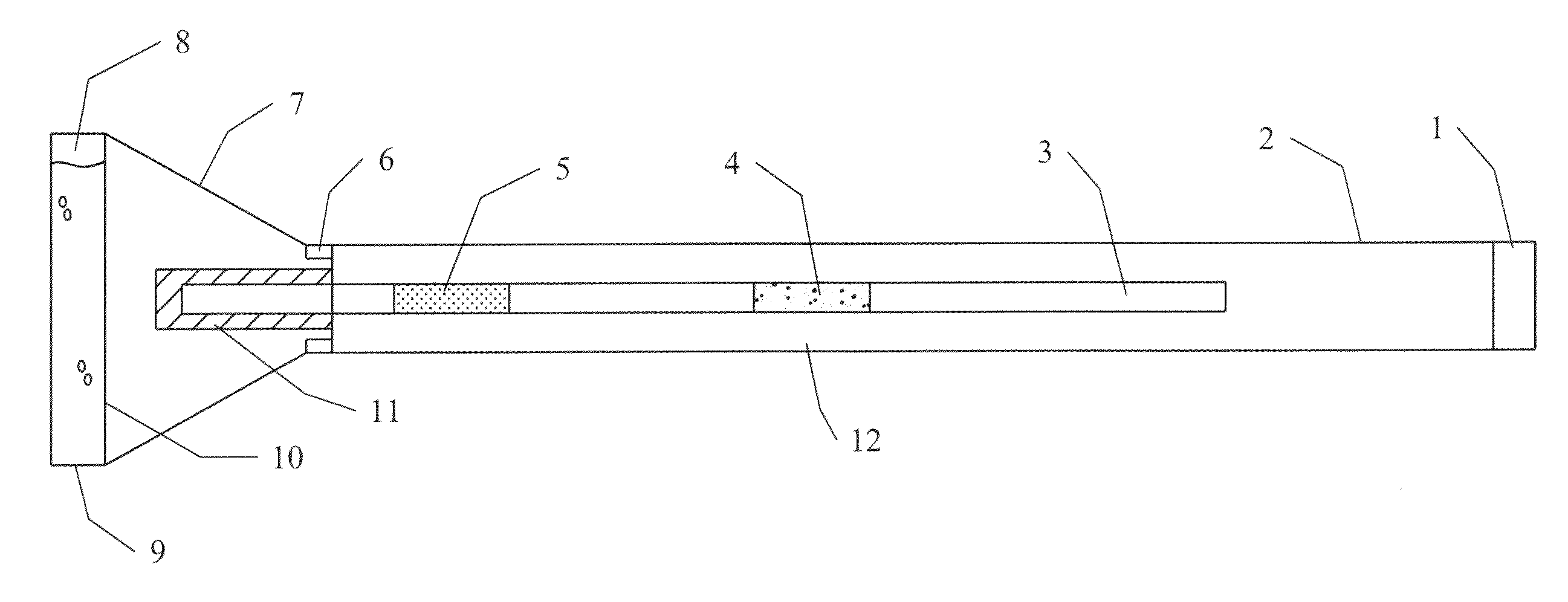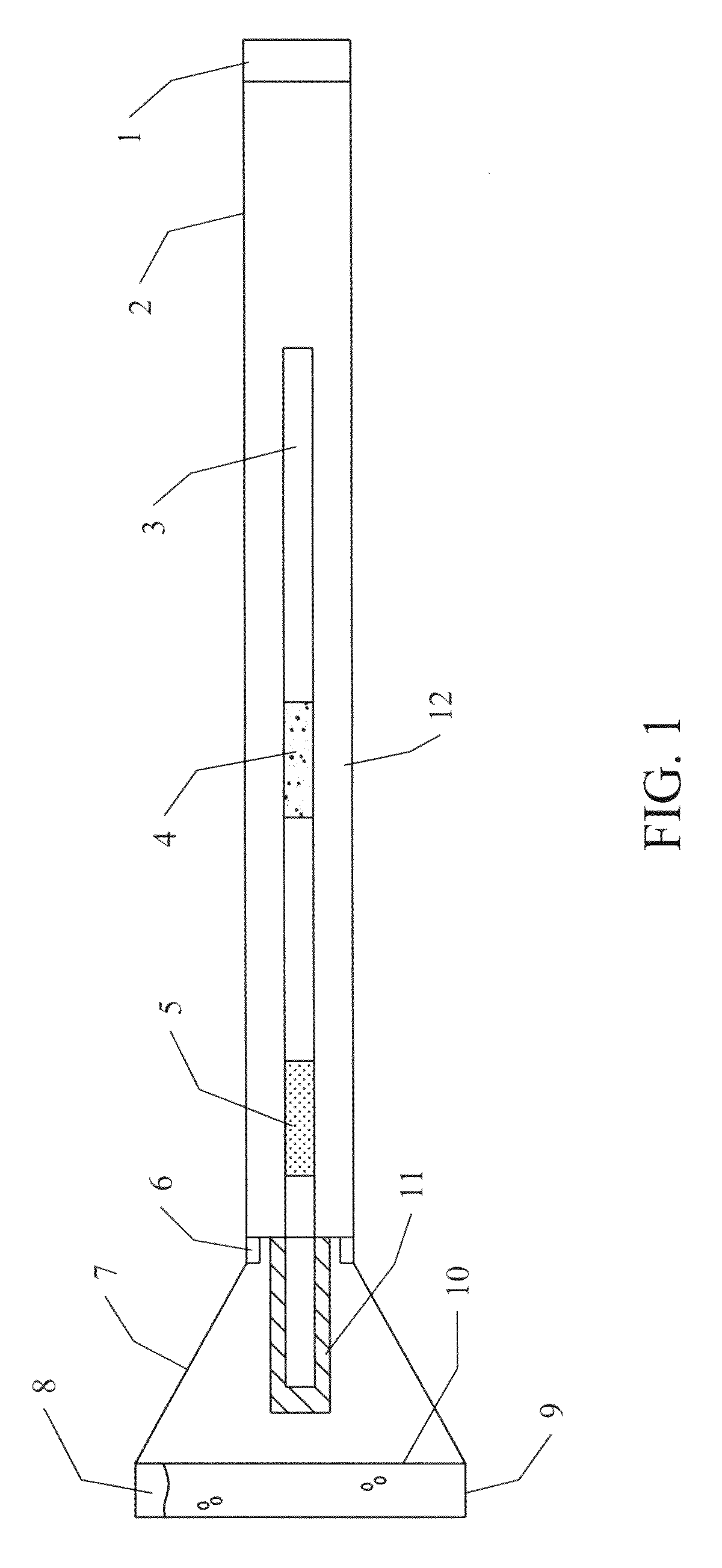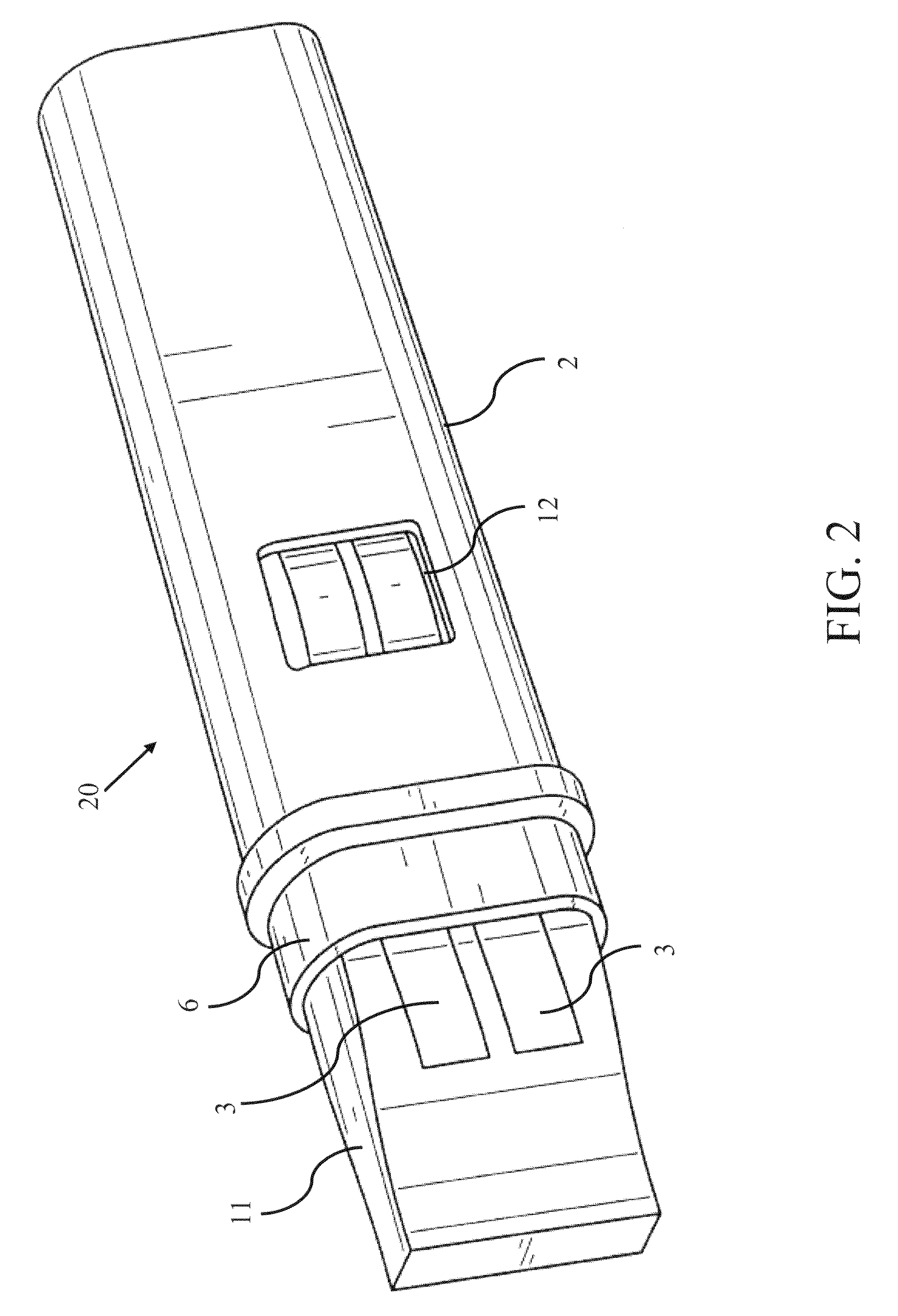Devices and methods for the collection and detection of substances
a technology applied in the field of devices and methods for collecting and detecting substances, can solve the problems of cumbersome testing procedures, limited area available for testing, and inability to perform tests in below freezing climates, and achieve the effect of facilitating quantification of reactions
- Summary
- Abstract
- Description
- Claims
- Application Information
AI Technical Summary
Benefits of technology
Problems solved by technology
Method used
Image
Examples
Embodiment Construction
[0050]The present invention provides a single self-contained device, and materials and methods for manufacturing and using the single device, for collecting, transferring, extracting, and testing for the presence of target analytes from a sample taken from a solid surface and / or from air or fluid samples. Preferably, the single self-contained device is used to detect illicit drug residues (such as residues from marijuana, cannabis sativa, cocaine, heroin, and the like) from solid surface, air, or fluid samples and incorporating the ability to send the device or part of the device for further analysis under forensic chain of custody.
[0051]The invention is described herein by reference to several embodiments selected for illustration in the drawings. It should be understood that the spirit and scope of this invention is not limited to the embodiments shown in the drawings or the specific embodiments in the following description. Also, it should be understood that the drawings are not ...
PUM
| Property | Measurement | Unit |
|---|---|---|
| diameters | aaaaa | aaaaa |
| geometric surface area | aaaaa | aaaaa |
| geometric surface area | aaaaa | aaaaa |
Abstract
Description
Claims
Application Information
 Login to View More
Login to View More - R&D
- Intellectual Property
- Life Sciences
- Materials
- Tech Scout
- Unparalleled Data Quality
- Higher Quality Content
- 60% Fewer Hallucinations
Browse by: Latest US Patents, China's latest patents, Technical Efficacy Thesaurus, Application Domain, Technology Topic, Popular Technical Reports.
© 2025 PatSnap. All rights reserved.Legal|Privacy policy|Modern Slavery Act Transparency Statement|Sitemap|About US| Contact US: help@patsnap.com



